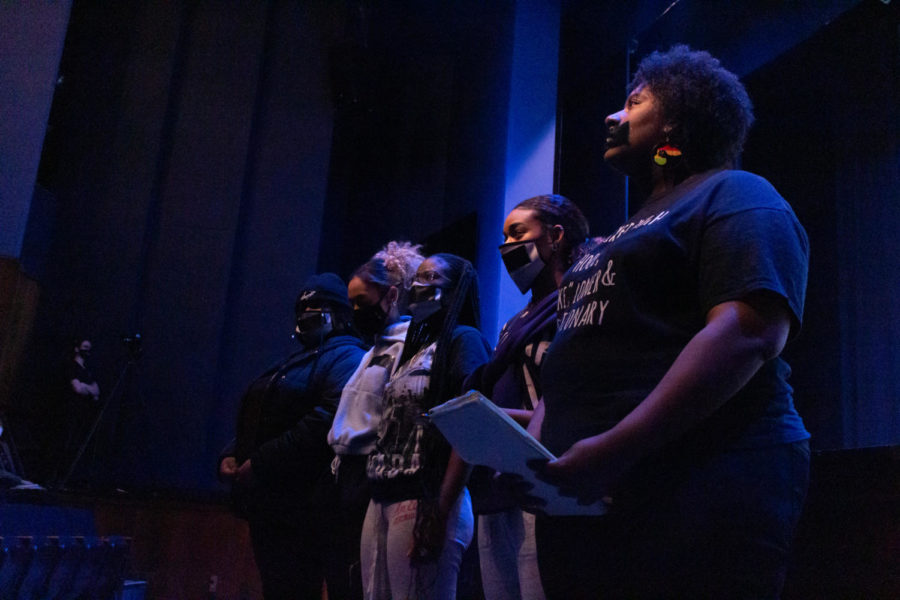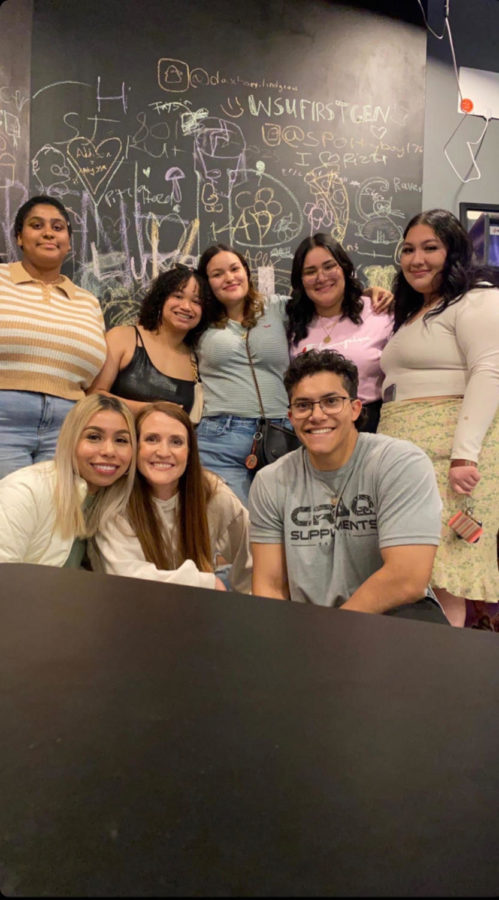


College athletes carry the stigma of low graduation and high dropout rates. For athletes at Weber State University, that doesn’t appear to be the case.
In fact, athletes at WSU graduate at a 10 percent higher rate than regular, full-time students and 18 percent higher than other institutional scholarship recipients.
“It reflects our athletic administration and the university administration,” said James Hajek, WSU basketball player and business administration graduate. “They have given us the right tools to succeed. Each individual coach has recruited the right character of individuals. They are individuals who want to come here to get a degree.”
According to the U.S. Department of Education, federal student graduation rates (FGR) are calculated measuring the percentage of first-time, full-time freshmen who graduate within six years of entering their original four-year institution.
“The federal government gives students six years to complete a bachelor’s degree,” said Clayton Anderson, WSU director of institutional research. “That is called the 150 percent mark. If it were a 100 percent mark, at four years, we would figure out our graduation rates. But they give us 150 percent of the normal time period.”
For freshmen who entered WSU in 2007, the most recent year that the data set has been completed, 52 percent of WSU athletes graduated after six years. Overall, the WSU student graduation rate was 42 percent after six years. Only about one-third — 34 percent — of the recipients of institutional scholarships graduated in this time period.
WSU Athletic Director Jerry Bovee said that because of strict NCAA eligibility rules, athletes understand the urgency to do well in classes, so they can keep playing their sport. Athletes must continually progress toward their degree to maintain that eligibility. Bovee said that there comes a time in all players’ careers that they begin to see a bigger picture.
“When athletes come here as freshmen, probably not unlike other freshmen who come to Weber State or any university, they are more focused on their athletic experience,” he said. “But there is a transition that happens throughout that academic experience to where they really start to focus on their future and bear down.”
The NCAA has also come up with its own system to track graduation rates among athletes. The system, known as the graduation success rate (GSR), takes into account students who transfer in or out of institutions and whether those students graduate at their new schools. WSU’s GSR for athletes in 2007 was 66 percent.
“GSR takes into account transfer students or LDS missions, things like that, which fit in the timeline window of determining graduation rates,” Bovee said. “They typically give you six years to graduate and track that. If you go on a mission, you sign a pro contract or you transfer to another university, the NCAA takes that into account.”
While both GSR and FGR are useful, each must be taken with a grain of salt. FGR tends to be overly harsh and GSR tends to be too generous toward athletes. To compare athlete graduation rates to those of other students, FGR must be used because that is the system colleges use for regular students.
From 2000-2007, WSU’s athlete graduation success rates have fluctuated between 78 percent as a high and 62 percent as a low. During that same time, WSU’s overall federal graduation rate has been between 47 and 52 percent. Since 2004, athlete FGR at Weber State has risen slightly each year. Numbers can vary significantly between sporting programs.
Athletes have a dedicated staff member whose job it is to keep them on track in terms of graduation and eligibility. According to Catherine Zublin, WSU theater professor and associate dean of the Lindquist College of Arts & Humanities, it wouldn’t be possible to have such faculty members available to the larger student body at WSU.
“In athletics, they have employees dedicated to making sure that the student-athletes are performing academically,” she said. “In the academic areas, we don’t have that ability. Everyone in my area is a full-time employee doing other parts of their job. We are not in a place like athletics where we have someone whose sole job is to make sure that everyone is doing well in class. We take that on as a group responsibility. I like to think that we are doing the best that we can.”
The name of that dedicated staff member at WSU is Andrea Lauritzen, WSU’s athletics academic coordinator. She works with athletes from admissions to graduation. She is in charge of finding tutors, making sure athletes stay academically eligible and making sure they are progressing toward graduation. She said that the added supervision of athletes could explain why they graduate at a faster rate than other students.
“We have to know everything about the athletes, in every aspect of their life, because we have to keep them eligible,” Lauritzen said. “Students at the regular campus, they are here on their own. They go to school and can choose what and when to take things. They don’t have to meet all these deadlines. They aren’t required to be in study hall. They aren’t required to do all of these other things. They have a lot more flexibility in how they do things. That can sometimes be an advantage, but in some ways, because they have that flexibility, there is not as much structure around them to get them done more quickly.”
In addition to FGR and GSR, teams are also rated on their academic progress rate (APR). In this system, each athlete on a team has the potential to be awarded two points. They earn a retention point for staying in school and an eligibility point for being academically eligible and progressing toward graduation. The total number of points per team is then divided by the points possible and the percentage is multiplied by 1,000 to produce the APR. A perfect score is 1,000.
The minimum score that the NCAA allows is 930. Failure to meet this number results in incremental penalties per year. Teams can lose practice time, scholarships and eligibility to participate in post-season tournaments and ultimately a suspension from Division 1 status.
While these are incentives for coaches to get the best out of their athletes, at WSU, coaches also have monetary incentives in their contracts if their teams finish with an APR above 950. WSU Football Coach Jay Hill receives $4,000 for each year his team finishes with an APR of 950. Men’s Basketball Coach Randy Rahe has an incentive of $2,000 for each year.
“APR scores are tied to the head coach. Whatever his or her team got for that year, that score is attached to their history,” Lauritzen said. “It makes the coaches responsible for making sure their teams are not just about playing but also about academics. The NCAA is trying to make sure that these students aren’t being taken advantage of. They are being promised that if they come here, they are given an opportunity to get a degree.”
Hajek said improved graduation rates for athletes could be attributed to the expansion of help that WSU provides to student athletes. Whether it is tutoring or getting assignments before road trips, Hajek said he has never had trouble getting the help he needed.
“I was always presented help when I needed it, whether from a tutor or even a teacher,” he said. “If I would speak to my teacher and explain my situation, all the teachers that I have dealt with at Weber State have been very accommodating.”
WSU senior and softball player Brooke Silva said that she constantly received messages from her athletic academic adviser informing her about available tutoring and had to meet with the adviser regularly to check progress.
“You have an adviser that is constantly on you about your academics,” she said. “They use Cat Tracks very well. Once we hit our junior year, we have to prove to our academic adviser that we actually met with our major adviser. Our junior year, we have to make sure that we are on track to graduate. If we aren’t, then we are not eligible to play the sport that we love.
Hajek graduated in December with his bachelor’s degree in business administration. He used his final semester of eligibility to begin his MBA. While some athletes use college specifically as a means to prepare for a professional career, Hajek thinks that most student athletes go to college to get their degrees.
“The great majority of us student athletes understand that there are very few athletes who become professional athletes,” Hajek said. “If you are here, you have to get that degree. That is something that is communicated with us when we come in here as freshmen.”
Bovee echoed that sentiment. Compared to teams such as the University of Kentucky, that routinely lose freshmen to the NBA draft after just one season, athletes at WSU have a long history of finishing their degrees. Even the outliers, such as NBA point guard Damian Lillard, have seen the importance of an education outside of their sport.
“We have an NBA guy right now that has finished his degree this year,” Bovee said of Lillard. “That was important to us and to him. When he left here, we had that conversation with Damian.”
Bovee said that although some colleges may warrant the stigma of being just a stepping stone to a professional career, he says that that doesn’t apply to Weber State.
With increased attention placed on academics, Bovee foresees even greater academic success rates for WSU athletes in the future. His vision of an athletic culture that focuses on academics as well as sports, which he has been working toward during his six-year tenure at WSU, is starting to take shape.
“We have an overall focus and are creating a culture, talking about it everyday and creating a program here that helps athletes become more well-rounded,” Bovee said. “We are bringing in the right kind of young people to represent Weber State in that way, and it has been a focus. I expect our graduation rates to continue to go up.”
As for non-athletic students at WSU, there doesn’t seem to be any lack of services available to them. They have the same opportunities to receive help, but they are just a little harder to find.
“I think Weber State does a very good job of offering services,” Zublin said. “I think that mostly students have to go look for them. It’s not that they don’t know about them. It is in the students’ best interest to take advantage of that, whether they are an athlete or not.”
Silva, who will be going to graduate school after graduating in the spring, said she wonders how students find services without all of the constant messages that she receives because she is an athlete. She hopes to find those services when she has to do it on her own.
“I might have a little bit harder time finding resources,” Silva said. “I won’t be getting those notices on Canvas telling me when I need to register or where I can find things. I always tell myself that if I weren’t an athlete, I would have no clue what I would do or what steps to take.”







